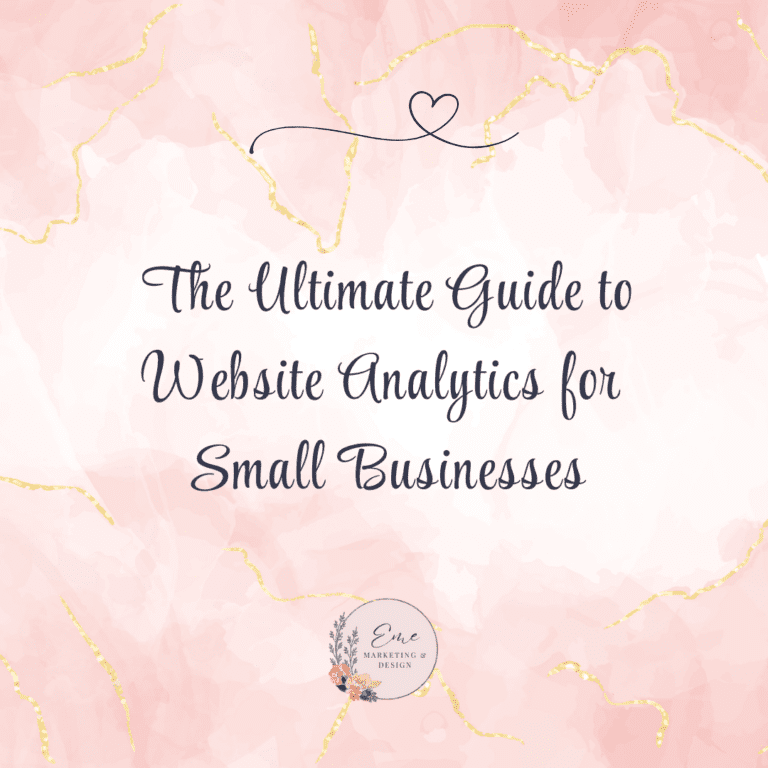
Leveraging advanced analytics is crucial for optimizing your online presence and driving business growth. Whether managing social media profiles on Facebook, LinkedIn, and Instagram or optimizing your Google Business Profile and website, advanced analytics provide actionable insights to refine your strategies and enhance your performance. Here are comprehensive tips for utilizing advanced analytics across these platforms.
Facebook Analytics Tips
- Utilize Facebook Insights for Detailed Data:
- Post Performance: Use Facebook Insights to analyze post reach, engagement, and demographics. Identify what content resonates best with your audience.
- Audience Insights: Dive into your followers’ demographics, interests and behaviors. This data helps you tailor your content and ads to your target audience.
- Leverage Custom Audiences:
- Retargeting Campaigns: Create Custom Audiences based on website visitors, customer lists, or engagement with your Facebook page. Retargeting these audiences can significantly improve ad performance.
- Experiment with A/B Testing:
- Ad Variations: Use Facebook’s A/B testing feature to compare ad creatives, headlines and CTAs. Identify which variations drive the best results and optimize your campaigns accordingly.
- Track Conversion Events:
- Facebook Pixel: Install the Facebook Pixel on your website to track conversions, optimize ads, and build targeted audiences. Analyze data on actions like purchases, sign-ups and page views to measure the ROI of your campaigns.
- Analyze Engagement Metrics:
- Interaction Analysis: Look beyond likes and shares. Measure comments, video views, and link clicks to understand deeper engagement levels. These metrics provide insights into content effectiveness and audience preferences.
LinkedIn Analytics Tips
- Use LinkedIn Page Analytics:
- Follower Insights: Monitor follower demographics, growth trends, and engagement. Understand who engages with your content and adjust your strategy to attract more relevant followers.
- Content Performance: Analyze post-performance metrics such as impressions, clicks, and interactions. Identify top-performing content to replicate success in future posts.
- Leverage LinkedIn Campaign Manager:
- Campaign Metrics: Track key metrics like click-through rates (CTR), conversion rates, and cost per conversion. Use these insights to optimize your LinkedIn ad campaigns for better ROI.
- Audience Insights: Utilize LinkedIn’s audience insights to understand the professional demographics of those interacting with your ads. Tailor your targeting and messaging accordingly.
- Implement LinkedIn Analytics Tools:
- Third-Party Tools: Consider using tools like Hootsuite, Sprout Social, or LinkedIn Analytics within LinkedIn’s Campaign Manager. These tools provide deeper insights and comprehensive reporting.
- Analyze Competitor Performance:
- Benchmarking: Compare your LinkedIn performance against competitors. Identify gaps and opportunities in your strategy to stay ahead in your industry.
- Optimize for Mobile:
- Mobile Engagement: Analyze mobile engagement metrics to ensure your content is optimized for mobile users. This is crucial as many LinkedIn users access the platform via mobile devices.
Instagram Analytics Tips
- Utilize Instagram Insights:
- Post and Story Metrics: Track metrics such as reach, impressions, saves, and shares for posts and stories. Use this data to understand what content types and formats drive the most engagement.
- Follower Insights: Analyze follower demographics, growth trends, and activity times. Tailor your content and posting schedule to align with your audience’s preferences.
- Leverage Instagram Shopping Insights:
- Product Performance: For businesses using Instagram Shopping, analyze metrics related to product views, clicks, and sales. Based on this data, optimize your product listings and promotions.
- Experiment with Instagram Ads:
- Ad Analytics: Use Instagram’s ad analytics to measure performance metrics like CTR, conversions, and cost per click (CPC). Test different ad formats and targeting options to maximize ad effectiveness.
- Monitor Hashtag Performance:
- Hashtag Insights: Track the performance of hashtags used in your posts. Identify which hashtags drive the most reach and engagement and incorporate them into your strategy.
- Engage with User-Generated Content (UGC):
- UGC Analysis: Monitor engagement metrics for user-generated content featuring your brand. Encourage more UGC by engaging with users and featuring their content on your profile.
Google Business Profile Analytics Tips
- Use Google My Business Insights:
- Search Queries: Analyze the search queries that lead users to your Google Business Profile. Optimize your profile content and website to align with these queries.
- Customer Actions: Track actions like website visits, direction requests, and phone calls. Understand what drives customers to interact with your business and enhance these elements.
- Monitor Review Analytics:
- Review Sentiment: Analyze the sentiment of customer reviews. Identify common themes and address negative feedback promptly to improve customer satisfaction and reputation.
- Track Local Search Performance:
- Local SEO: Use Google My Business Insights to monitor how often your profile appears in local searches. Optimize your profile with relevant keywords, photos, and up-to-date information to improve local search visibility.
- Leverage Google Posts:
- Post Performance: Analyze engagement metrics for Google Posts, such as views and clicks. Use this data to create more compelling and relevant posts for your audience.
- Utilize UTM Parameters:
- Campaign Tracking: Add UTM parameters to your Google Business Profile URLs. Track the performance of these links in Google Analytics to understand your profile’s impact on website traffic.
Website Analytics Tips
- Implement Google Analytics 4 (GA4):
- Enhanced Tracking: Upgrade to GA4 for advanced tracking capabilities. Use features like event tracking, user journey analysis, and AI-powered insights to understand user behavior better.
- Track Key Performance Indicators (KPIs):
- Goal Setting: Define and track KPIs such as conversion rates, bounce rates, average session duration and pages per session. Use these metrics to measure website performance and identify areas for improvement.
- Analyze Traffic Sources:
- Source/Medium Analysis: Understand which traffic sources (organic, direct, referral, social, paid) drive the most valuable visitors. Allocate resources to the most effective channels.
- Leverage Behavior Flow Reports:
- User Journey: Use behavior flow reports to visualize users’ paths through your website. Identify drop-off points and optimize your site’s navigation and content to improve user experience.
- Conduct A/B Testing:
- Experimentation: Use tools like Google Optimize to conduct A/B tests on different elements of your website. Test variations of headlines, CTAs, layouts and images to determine what drives the best results.
- Monitor Mobile Performance:
- Mobile Analytics: Analyze metrics related to mobile traffic, such as load times, bounce rates, and conversion rates. Ensure your website is fully optimized for mobile devices.
- Track User Engagement:
- Engagement Metrics: Measure metrics like scroll depth, time on the page, and interaction with interactive elements (videos, forms, etc.). Use this data to enhance user engagement and retention.
- Implement Heatmaps and Session Recordings:
Final Thoughts on Advanced Analytics
Advanced analytics provide invaluable insights into the performance of your digital marketing efforts across Facebook, LinkedIn, Instagram, Google Business Profile, and your website. By leveraging these tips, you can optimize your strategies, engage your audience more effectively, and drive business growth. Continuously monitor, analyze, and refine your approaches to stay ahead in the ever-evolving digital landscape.
Next Steps
Ready to elevate your digital marketing strategy? Partnering with Eme Marketing & Design offers you a wealth of expertise and a personalized approach tailored to your unique business needs. Our team leverages advanced analytics, cutting-edge tools and strategic insights to optimize your online presence across platforms like Facebook, LinkedIn, Instagram, Google Business Profile and your website. From enhancing your social media engagement to driving targeted traffic and conversions, we’re here to help you achieve your goals. Contact us today to start your journey toward digital marketing success and see how Eme Marketing & Design can transform your online strategy.




